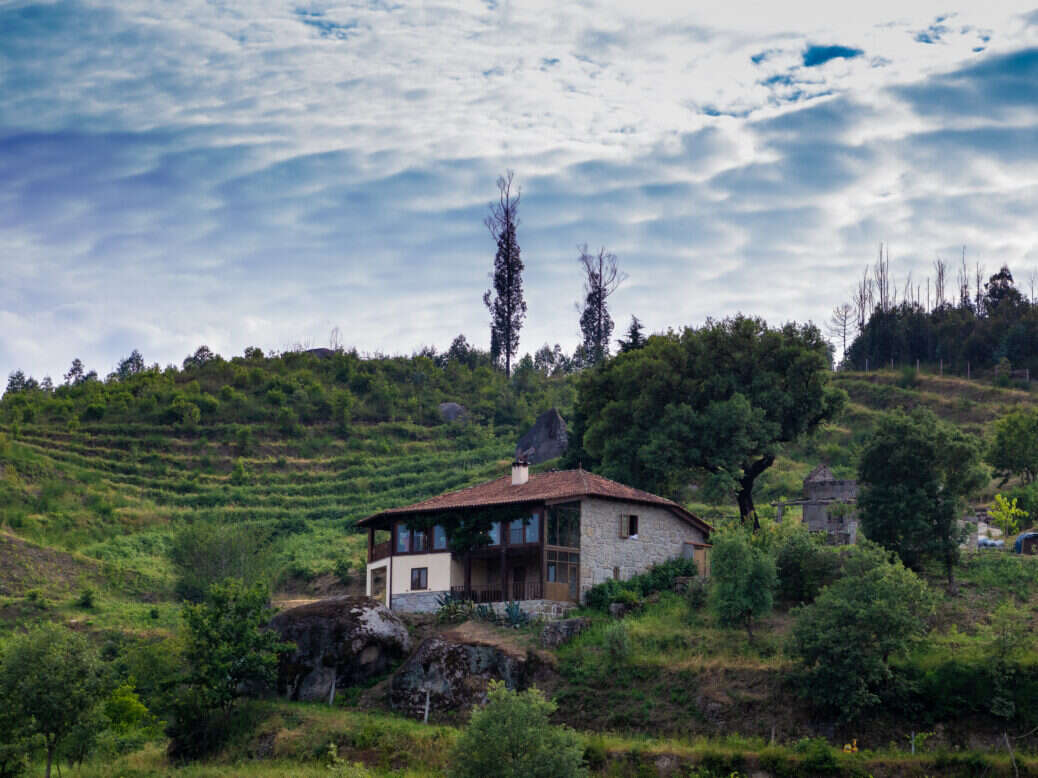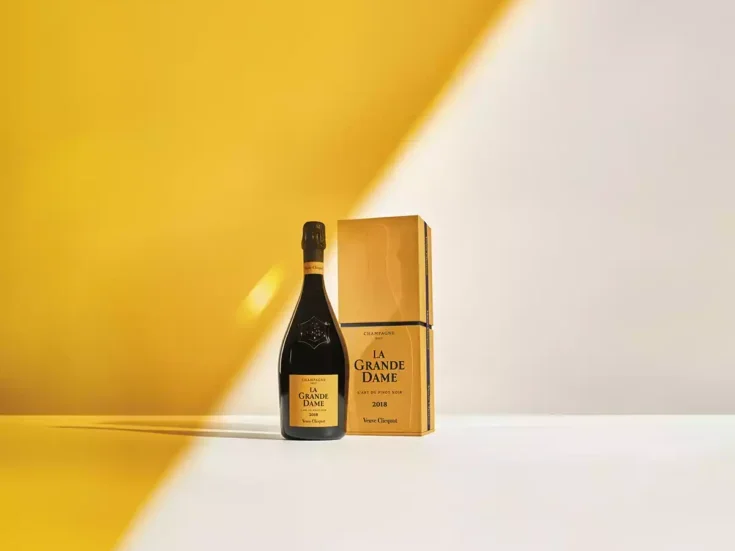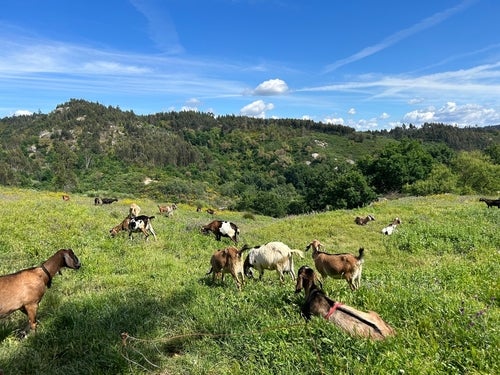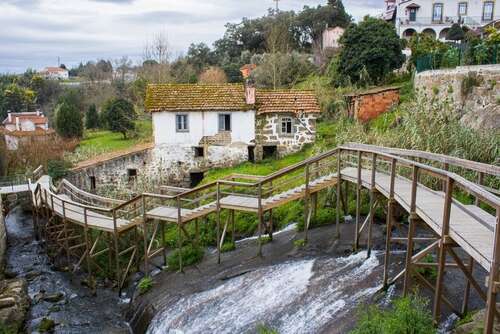
The Dão has improved enormously over the past 30 years, with the best wines now making good on their considerable promise, says Richard Mayson, after a tasting shared with Simon Field MW and Andrew Jefford and featuring additional commentary from Paul White.
This is an extract from an article first published in WFW84. For full tasting notes and scores for all 56 wines tasted by the panel, subscribe to The World of Fine Wine.
Anyone familiar with Portugal will know that the Dão region is capable of producing some of the country’s best, most characterful red wines. It is just that, in the past, all too often the region failed to live up to its reputation, which has now been eclipsed in both volume and status by the new wave of reds from the Douro and Alentejo. It was our mission in this tasting to look again at the region, after a 30-year period when the producers have been quietly rediscovering the intricate granite terroir of central Portugal.
Dão is named after a small river that runs parallel to the upper reaches of the Mondego, the largest river entirely within Portugal’s national boundaries. It is a broad valley, almost cocooned by mountains, with the Serra de Estrela to the southeast, rising to nearly 6,600ft (2,000m) above sea level, the highest point in mainland Portugal. The mountains have an important bearing on the climate, protecting the region from the excesses of both the Atlantic and the Iberian Peninsula. With an annual average of around 39–47in (1,000–1,200mm), rainfall is high but comes mostly in deluges from autumn to spring; the summer months are dry. Spring frosts are an ever-present risk. The underlying bedrock is mostly granite, which weathers to form a granular, often shallow sandy soil. Huge granite boulders punctuate parts of the landscape. Much of the region is heavily forested, planted with pine and eucalyptus, with stands of oak and chestnut among the evergreens. The region currently has around 20,000ha (50,000 acres) of vineyard.
The slow rediscovery of terroir
Dão came together as a DOC in 1908 but had previously flourished in the 19th century, when Touriga Nacional was the principal grape variety. It is possible that this, Portugal’s best-known indigenous red grape, originates here. Phylloxera came late to Dão but damaged the region’s vineyards, which were replanted in the 20th century with grape varieties (including American hybrids) that were intended to bolster yields. As in much of northern Portugal, “small” is the operative word in Dão, with thousands of minifundios, in complete contrast to the large estates (latifundios) in the south. American geographer Dan Stanislawski, visiting the region in the late 1960s, described the scene thus: “A continuous vineyard of 10 acres [4ha] is unusual; and a vineyard of a few dozen vines is not extraordinary. In fact, small vineyards, both in number and total production, are dominant.”
In order to make some sort of economic sense from this fragmentation, in the mid-20th century the region’s smallholders were effectively herded into state-sponsored winemaking cooperatives. This came with the draconian proviso that private firms were forbidden from buying in grapes; they were forced into buying ready-made wine. Quality suffered, especially at the top end, since co-ops provided little or no incentive for more conscientious growers to deliver better grapes. When I joined the wine trade in the mid-1980s, Dão was a byword for lean, austere, attenuated red wines whose fruit had often dried out from excessive aging prior to bottling. A minimum of two years’ aging was proscribed by law. The cooperative hegemony that produced this state of affairs lasted more than 40 years, until it was overturned following Portugal’s entry into the European Union in 1986. During this time, just three commercial names kept the region’s reputation alive: Casa de Santar, which made and bottled wines from its own vineyards; Bairrada-based Caves São João, which sourced wine directly from the privately owned Santos Lima estate at Silgueiros; and UDACA, which did its best selecting what it could from the co-ops. All three submitted wines to our tasting. Some may also remember that the Centro de Estudos Vitivinícolas do Dão (CEVD) at Nelas made small quantities of fine wine during the 1960s, including some of the first varietal reds from Touriga Nacional, Jaen, and Alfrocheiro. Some of these wines were remarkable for their longevity and were a herald for Dão as a fine-wine region.
Since 1990, when the cooperative monopoly was overturned, the growers in Dão have been rediscovering their terroir. It has been a slow process, hampered by the difficulty in putting together a vineyard of viable size from so many tiny holdings. Sogrape, Portugal’s largest group of winemakers, was first off the blocks, initially working in tandem with a local co-op before setting up on its own in the heart of the region between Mangualde and Nelas. Grão Vasco and Duque de Viseu are the two bestselling brands of Dão wine (neither of which was submitted here), but two wines from Sogrape’s 100ha (247-acre) single-estate Quinta dos Carvalhais were included in our tasting.
A real sense of place
Modern-day Dão is officially divided into seven subregions—Alva, Besteiros, Castendo, Silgueiros, Terras de Azurara, Terras de Senhorim, and Serra da Estrela—which may be designated on the label. Apart from Serra da Estrela, with its connotations of altitude and cooler climate, these are rarely used. The regional demarcation descends steadily, from around 3,300ft (1,000m) above sea level on the Serra da Estrela foothills, to around 330ft (100m) above sea level in the southwest near Santa Comba Dão and Mortágua, where the Mondego breaks free from the mountains as it flows toward the university city of Coimbra and the sea. Most vineyards are to be found at middle altitudes, with the highest planted up to 2,600ft (800m) on the Serra da Estrela foothills around Gouveia and Seia. The majority of Dão wine is red, based on Jaen (Spain’s Mencia), Touriga Nacional, Aragonez (Tinta Roriz), and Alfrocheiro, with support from Baga, Tinta Pinheira (Rufete), and Trincadeira. Cabernet Sauvignon has a historical place in the region, having long been part of the vineyards at Casa da Ínsua. We received one wine made entirely from Cabernet Franc and varietal wines from Touriga Nacional, Jaen, Alfrocheiro, and Tinta Pinheira, but the majority (and those that scored most highly) were time-honored blends. Those from older vineyards were field blends.
Producers were asked to submit a younger and older wine, to give us a clearer idea of their evolution and progress. There was general agreement among the tasting panel that this tasting was “hard work” but that, overall, it was thoroughly rewarding. Andrew Jefford concluded that it was an “exhausting, even stressful tasting,” with red wines that were “fierce, clenched, and forbidding […]; few other red wines are as intrinsically ‘difficult.’” Simon Field MW (whose average score was the highest) was more generous, remarking, “where I feared rusticity and austerity […], I was, more often than not, appeased by a subtly beguiling array of flavors, herbs and spices decking the halls of fruit, with no lack of charm and structural integrity.” I was rather more critical and marked down wines that I felt were austere, astringent, and sometimes one-dimensional, reflected in my lower average score. But there were flashes of brilliance here, and there were wines showing a real sense of place through their tight-knit restraint and mountain finesse. There was scant evidence of the dried-up, attenuated reds of yesteryear (even though we went back as far as 1980), but there was a common theme of acidity and astringency, which are the hallmarks of Dão. “Brutal” was a word that appeared in more than one instance. Andrew Jefford observed that “tannins from granite-grown fruit often seem to be harder and less pliant than those grown on marl, limestone, or gravels,” adding that parts of Cornas and Hermitage have the same problem. It is remarkable how many of our notes drew comparisons with great European reds, with tasters alluding to Cornas, St-Joseph, Pomerol, Pessac-Léognan, Burgundy, Languedoc, and Amarone, as well as general references to “claretty” wines. I frequently found myself writing “cedary,” in the mature bordelais sense of the word. Andrew Jefford concluded that there were some “splendid wines here, forthright, classical, in the great European tradition.”
Among the top-placed wines, there was no single year that stood out—though among recent vintages, 2019 and 2017 were perhaps the most impressive. The longevity of some wines was also notable, with high-scoring wines coming from 2013, 2011, 2001, and, in my case, 1980. One wine was almost “stuck in youth.” The scoring was often divergent, with high and rather lower marks being awarded to the same wine, which brought down the averages. It is clear that one man’s “purity,” “harmony,” and “essence of place” could be another’s “unyielding austerity.” Although Simon Field was “surprised by the well-judged oak treatment,” a few wines were marked by too much new oak, and I readily concur with Andrew Jefford that “new oak seems to be a serious mistake for Dão.” So, where does this leave us? The Dão region has come on in leaps and bounds since the dire old days of the last century. These wines, with their naturally high levels of tannin and acidity, will never be easy and will often be challenging. On the whole, producers seem to be recognizing and even celebrating their sense of place: “There’s no point repressing or denying place and trying to make something light, elegant, or frivolous,” said Andrew Jefford. The best red Dão wines are “profound” and “compelling,” ready to be ranked with the European greats in a sense that perhaps still escapes the more accessible wines from the Douro and Alentejo. In another issue, we will taste white Dão to see if we can draw similar conclusions.
The Top Five: The best of Dão
Quinta dos Roques Colheita Dão 2020 (13% ABV) |94
SF | Dense color—onyx, soot—and an appropriately Dickensian nose: tar, smoke, and dried fruit. Behind that, sloes and just a hint of eucalypt. A complete and satisfying mouthfeel, fruits both black and blue dancing a merry dance, the acidity keeping them in order and the soft, chalky tannins refusing to neglect the value of the moment in terms of gratification. Very Dão, very agreeable. Smoky bacon and black fruits, grippy acidity, and a broad, expansive peroration. | 93
AJ | Very dark, black-red: almost opaque. Earthy and fresh, with the memory of yeast, hyper-present aromas: clean, vital, very exciting. Forests and pressed leaves over dark sloe and damson fruits. A quiet mill of aroma. Excellent nose—one of the best in the whole tasting. It grows in refinement in the glass. Dense, close-textured, and uncompromising wine; severe (very high in acidity), with the usual brisk, mountain tannins; lively, vivacious fruits. Not an easy glassful but very, very good, and this is the place itself, delivered with great honesty and purity. Dão in all its brutal glory. Excellent wine. The lingering extracts testify to vineyard work and sacrifice. A distant cousin of a good Cornas. 2024–32. | 94
Osvaldo Armado Raríssimo Dão 2001 (13.5% ABV) |93
SF | Opaque at core, with an amber rim. Aging nicely. The palate is elegant, with charcuterie, spice, and hints of spice; fine balancing acidity and impressive length. | 92
AJ | Dark black-red still; little sign of age. Refined and classical—another almost “claretty” aroma of fresh blackcurrant and plum fruits, and just a little leafiness in settled and well-ordered guise. On the palate, a distinguished older wine with—as the nose suggested—ample classicism and refined reserve to it. Very good drinking still, and a very fine testament to Dão’s longevity. Beautifully crafted wine from the off, I suspect. 2024–27. | 92
RM | Mid-deep brick-red center, with a thin, browning rim. Elegant and lifted on the nose, with a vestige of berry fruit. Similarly elegant on the palate, retaining sweet berry fruit, a pique of firm tannin, and a long, structured finish. This has developed well and will continue to do so in bottle. 2024–35. | 94
D Daganel Grande Reserva Dão 2017 (13.5% ABV) |93
SF | Really impressive, imperious color, luminous and inspiring. Aromatics of crushed black fruit, generous, toasty oak, and soft spices are effortlessly transferred to the style; tradition flirts with modernity and wins the day. A real sense of place here, a robust, yet precise structure, real power, authority, and unassailable elegance on the finish. Quintessential Dão. | 95
AJ | Perhaps the darkest of all in what is a very somber 2017 flight: true midnight black, still. A terrific aroma, almost Pomerol-like this time, with truffle and blackberry and milk chocolate but also intriguing citrus notes and floral notes. An amazing scent-machine, this wine. Prodigious! But balanced and subtle, despite its command. Another off-the-charts 2017, on the palate, as well as in aroma. My notes on the nose actually track what the palate does faithfully. This astonishing wine manages to mine a seam of sensuality that is rarely accessible in Dão. The tannins are plump and fat—and even more important, aroma-saturated. The fruit has an almost decadent inner sweetness; the acidity is, just this once, almost sweet and soft in itself; there isn’t a trace of bitterness anywhere. The wine, too, has a drinkability and fluidity that eludes the astonishing [Quinta dos Carvalhais Unico Dão 2017]. It is an extraordinary achievement and—if this is what climate change might bring to this region—bodes well for the future. A total showstopper and a must for any Portuguese wine lover’s cellar. 2028–50. | 97
RM | Very deep and opaque in color. Ripe, fragrant, heady aromas, with big, bold, cherry fruit. Another big, rather overextracted wine, with the fruit overwhelmed by saline tannins. A fresh finish, but sadly lacking in definition. 2024–32. | 87
J Carbal Almeida Musgo Reserva Dão 2019 (13% ABV) |92
SF | Bright, deep ruby, plenty of grip on the side of the glass, then an equally attractive nose: plums, sloes, violets, and marzipan. Plush oak shrouds the palate, but in a benevolent fashion, with structural integrity unchallenged and the line of acidity strong and forthright. A modern style, for sure, but made in a positive and generous fashion. | 91
AJ | Dark black-red. Attractive fruit and floral notes here, plus a moist tobacco sweetness: complex and intriguing (Pessac-Léognan-like in the mixture of fresh fruit and herbal freshness). Dense, complex, and refined. As in the aromas, the palate brings a fruit freshness together with herbal-vegetal notes, but actually nothing at all is green, the wine has no coarse oak, and the balance isn’t at all brutal; rather, it is shapely, svelte, and convincing. An excellent Dão and easily one of the best in our tasting so far. It shows a grace and tenderness that I was beginning to think wasn’t possible here. Beautifully crafted. 2024–33. | 93
RM | Mid-deep, youthful hues, with a restrained but polished floral character on the nose and a fine, verging on lean, linear streak on the palate, with sour-cherry fruit and a lithe, seamless finish showing considerable finesse. 2024–35. | 93
Quinta de Bella Encosta Dom Bella Grande Reserva Dão 2013 (14% ABV) |92
SF | A typically deep color. Aeration defies the intimations of Brett or whatever else; thereafter, there is dark fruit, smoke, and charcuterie, the fruits and figs that have been left in the loft over winter, then a nudge of bitter chocolate. The palate is a little strained, a touch sinewy, but the inherent virtues of impressive husbandry and even more impressive raw materials are writ large and with no lack of elegance. | 92
AJ | Still astonishing depth of color for a 2013. Lots of oak still palpable, which is a bit disappointing; some inky fruit beneath. Dark and thrusting still, with ample, searching acidity. Still almost a primary wine, but in this instance I don’t see the inner resource needed for it to unfold profitably; almost “stuck in youth.” But lots to grapple with, if you open a bottle; it doesn’t lack excitement in that sense. 2024–34. | 89
RM | Very deep, opaque, and still youthful in appearance. A restrained, attractive, savory, cedary character on the nose and on the palate, with tight-knit, dark-fruit complexity. Well structured, with good grip, freshness, and length, this is developing really well in bottle and will continue to do so. 2024–40. | 94
Quinta da Bordaleira Serra da Estrela 1.993m Dão 2018 (14% ABV) |92
SF | Deep coloration, near-onyx at the core. The nose is dominated by crushed bilberry, bloodied meat, and dried violet. Austere once again. The palate is more approachable, however, with raspberry fruit, soft spice, and a hint of buttered toast. Some quite impressive oak in play here, methinks. Overall, the ensemble has appeal, harmony, and a finely poised purity on the finish. | 91
AJ | Saturated, dense black-red. Sweet and warm. It’s not often this granite-soiled, high-altitude region flirts with “baked,” but we are almost there with this wine; attractive but not complex. Very dense and sweet-fruited on the palate, flirting with raisininess, yet the acidic brutality never really leaves, and the drinker is left struggling to try to cope with this almost schizophrenic balance, which is shocking and hard to resolve. For all that, this is one of the better wines in the tasting: There is real purity, drive, length, and profundity here. On the palate, there is nothing baked at all; the acidity initially chases that impression off, and then the tannins and extracts provide real, lingering interest and provocation. There is even a holly-leaf and gentian-root freshness that I couldn’t get on the nose at all. Finally, for all my qualms, I feel that this is very good wine with a long life ahead. 2024–34. | 92
RM | Deep, nearly opaque, youthful color, with lovely Burgundian aromas: new oak (still a bit disjointed) and restrained morello cherry, with underlying intensity and depth. Overt, smoky new oak cuts through initially on the palate, but the intense fruit comes back to dominate on the finish, and I think this wine just needs more time to integrate, elegance and finesse showing on the finish. 2026–40. | 92






